From ChatGPT to Mid Journey, AI tools made us more efficient through automation. While it is helpful to simplify work, individuals also use it as a tool to implement their malicious activities at a large scale.
Bot activity creates a severe load on applications and can be used to exploit services. Measures have to be taken against it.
While navigating the web, you must have filled out a captcha, selected the squares with traffic lights, or set the orientation of an object in a particular direction. These are all ways to prohibit bot activity.
With the advancements in AI, bots are learning to crack these firewalls.
The whole internet is playing a game of “Bot or not.”
A new method was required to realize whether a unique human produced the generated activity.
Proof of Personhood is one of the methods being explored at length to solve this problem.
What is Proof of Personhood?
Proof of Personhood(PoP) is a protocol that establishes the uniqueness of an online identity.
Simply, it ensures that the online activity is from a human, not a bot.
The mechanism works with a public-private key pair proving that a human owns the keys.
Currently, there are 2 approaches to PoP:
Social Proof Based
This method involves people vouching for each other. A verified person verifies the other for incentives and gets penalized if it's a false verification.
Biometric
This method involves the verification of any physical or behavioral trait of a person. The perfect example would be the Aadhar system in India.
This week’s blog will discuss a biometric approach to PoP—the project infamous for scanning eyeballs: Worldcoin.
Also, we have discussed why they used the eyeballs if you are curious about it.
What is Worldcoin?
Worldcoin is a global identity for individuals to access online services safely and seamlessly. It aims to become the go-to identity layer for everyone, irrespective of demographics.
Founded by Sam Altman, Max Novendstern, and Alex Blania, Worldcoin was built to enable a unified global economy.
Source: Wolrdcoin Open Source
The next step is to understand how Worldcoin functions.
How does Worldcoin work?
Worldcoin has 3 functioning pieces to its infrastructure:
World ID
World ID is the unique hash obtained by getting your Iris scanned. This is done to stop the duplication of IDs.
The retina scanners are called Orbs. They scan the structure of your retina and convert it into a unique hash for your public key.
The Hash is not the regularly used SHA-256. It is a specialized algorithm based on Machine-learned Gabor filters. The algorithm focuses on the entropy of biometric scans ensuring uniqueness. This allows SNARKS to ensure a corresponding public key to your private key in the database.
Why are the eyes scanned?
In an interview with Bankless, Alex Blanai explained why the eye was chosen as the biometric option.
A user is re-authenticated in a phone based on fingerprint, faceID, or password.
Confirmed user ➡ Allow phone access.
But in proof of personhood, we need sufficient uniqueness or entropy to establish a human.
The face structure doesn’t provide the necessary entropy. So the probability of fraud increases as the face structure can be recreated using 3D printing.
The entropy is relatively less for fingerprints, which could be overcome using your palm, but there is no live implementation.
Iris's complex structure provides the required uniqueness.
Some Launch stats
The beta launch garnered over 2Mn+ users getting their Iris’s scanned globally. It covered 30+ cities, including Hong Kong, Tokyo, Singapore, Seoul, Paris, Lisbon, Mexico City, São Paulo, Nairobi, New York, and San Francisco.
Source: https://whitepaper.worldcoin.org/tokenomics
World App
The World App is the wallet for the Worldcoin ecosystem. It acts as your identity and helps prove that you are a human. Other applications utilizing the Worldcoin layer can use this for KYC purposes.
Additionally, the app allows you to send and receive crypto using decentralized exchanges. The team is working on additional features to be launched.
Highlights of World App
The wallet uses Account Abstraction via SAFE contracts for better security and simplicity.
ENS integration
Uniswap for token trading
On-ramp and Off-ramp with the help of Ramp and MoonPay
Tokens available to trade: $BTC, $ETH, $USDC, $WLD, and many others are in the process of being added
The app had a good headstart with 1.5Mn+ people joining the World App pre-release.
Source: https://worldcoin.org/blog/announcements/introducing-world-app
$WLD Token
$WLD is the utility and governance token of Worldcoin. The major portion of the token is meant to be distributed throughout the community.
The token distribution method: You get the token if you are a human.
Well, if you prove it.
Talking about the supply, the total supply for the token is set at 10 Bn $WLD tokens which would unlock over 15 years for various parties involved, such as investors, team members, and others.
As of July 2023, the circulating supply of the tokens is 143 Mn $WLD tokens. Out of these, 43 Mn have been airdropped to verified users, and the rest have been provided to market makers.
The $WLD token has been listed in top exchanges like Binance, KuCoin, Huobi, Uniswap, ByBit, and 30+ others.
Source: https://whitepaper.worldcoin.org/tokenomics
Concerns Raised by the Community
With the announcement of Worldcoin, concerns have been raised by the tech community.
Let’s address those:
Data Collection - Privacy Issues
Many tech voices, including Vitalik Buterin, have voiced concerns regarding the data collection via the Iris scans.
“They could be harvesting more information than they are disclosing” - Vitalik
“Deceptive marketing practices, collected more personal data than it acknowledged, and failed to obtain meaningful informed consent.” - MIT Tech Review Article, April 2022.
Hardware Problem - Centralized, Government restriction, Manufacturing
The user onboarding depends on the Orbs. Since it’s just a piece of hardware, it’s vulnerable to various problems.
The orb is not accessible to everyone throughout the globe. It will take time until the orbs become available at the user's convenience so they can easily register themselves.
Vulnerabilities in hardware are a scary thing. At the same time, the code for the software is completely open-sourced. There is always the possibility of a backdoor to the database.
The orbs are manufactured by one entity - Tools for Humanity.
The specs are open-sourced, but no other entity is producing these orbs. Only one company controls the supply of these orbs.
The governments can restrict the devices and outright ban them within their jurisdiction.
Device Security - Phone gets hacked
The World App is your passport to the Worldcoin ecosystem stored on your device. The possibility of your phone being hacked and used to access your World ID cannot be ruled out.
Selling or Renting ID
Worldcoin, if implemented as per the plan, would create a united economy influenced by the World ID holders. This creates an economic opportunity for people to sell their power to other individuals who might benefit because of access to multiple IDs.
Conclusion
With the risks of AI, Worldcoin could prove to be a good layer of protection for the online world. But the project comes with its own set of risks.
The beta launch of the network was successful. People waited in long lines to get their eyes scanned.
It was to support it, or maybe they just wanted the airdrop.
Would you sign up for Worldcoin?



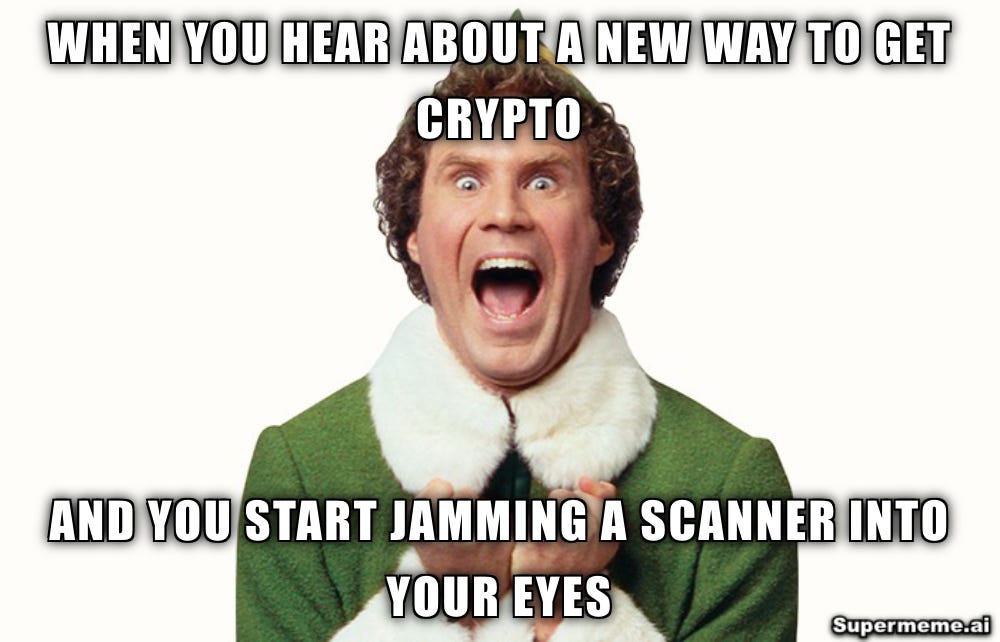
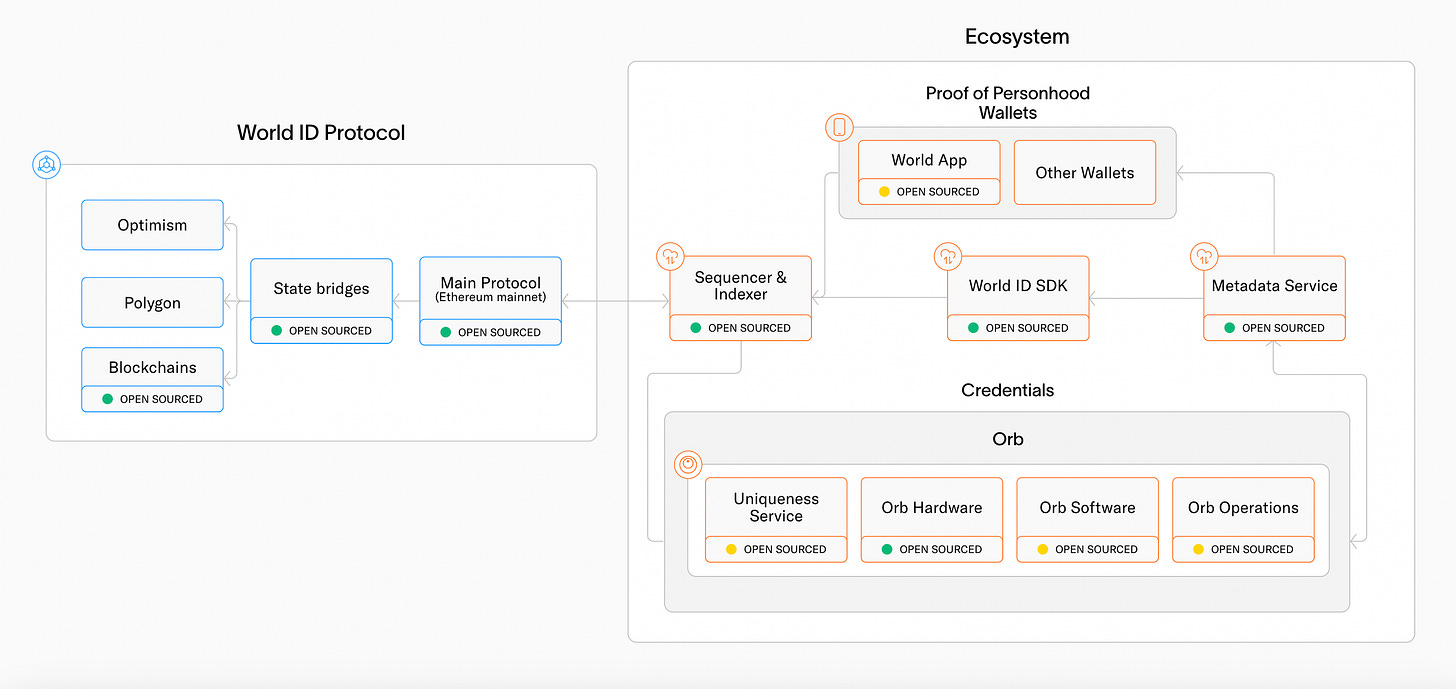
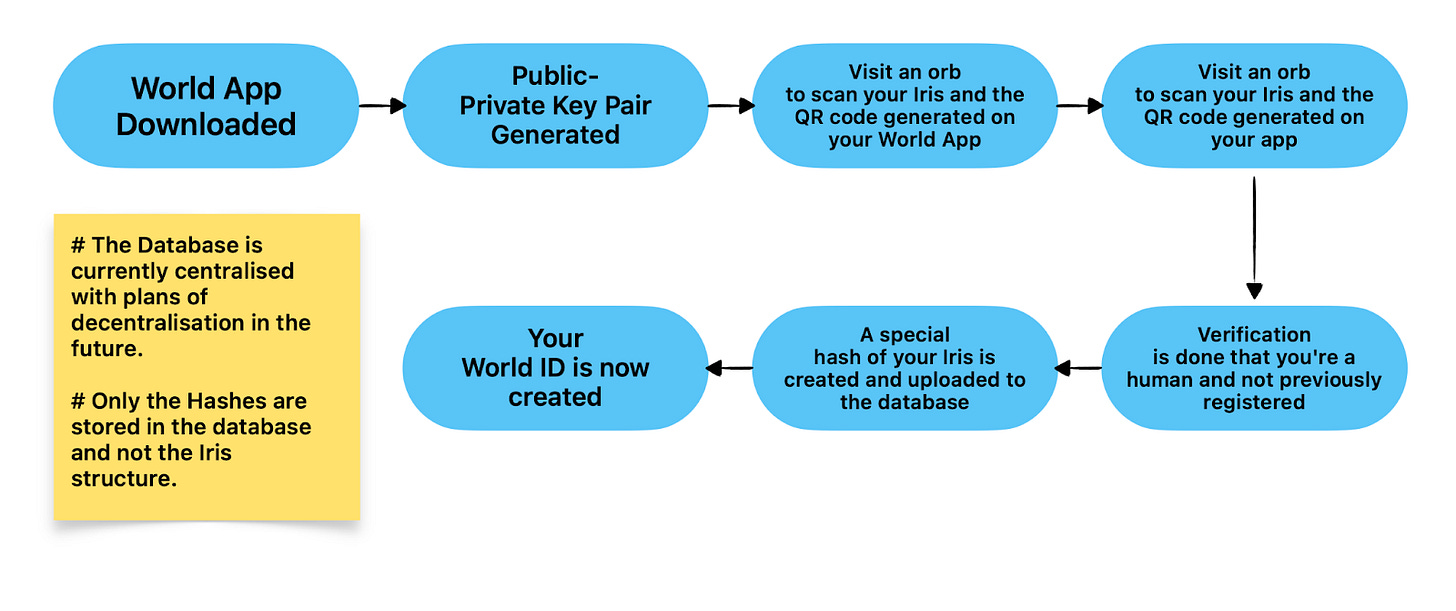
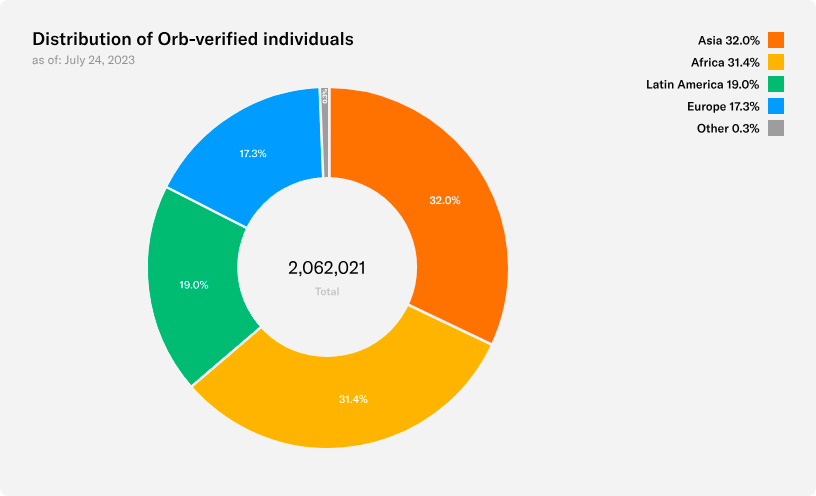
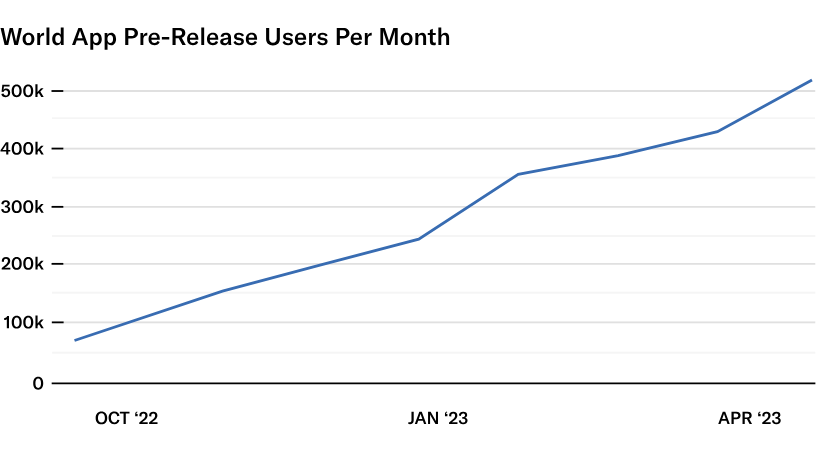
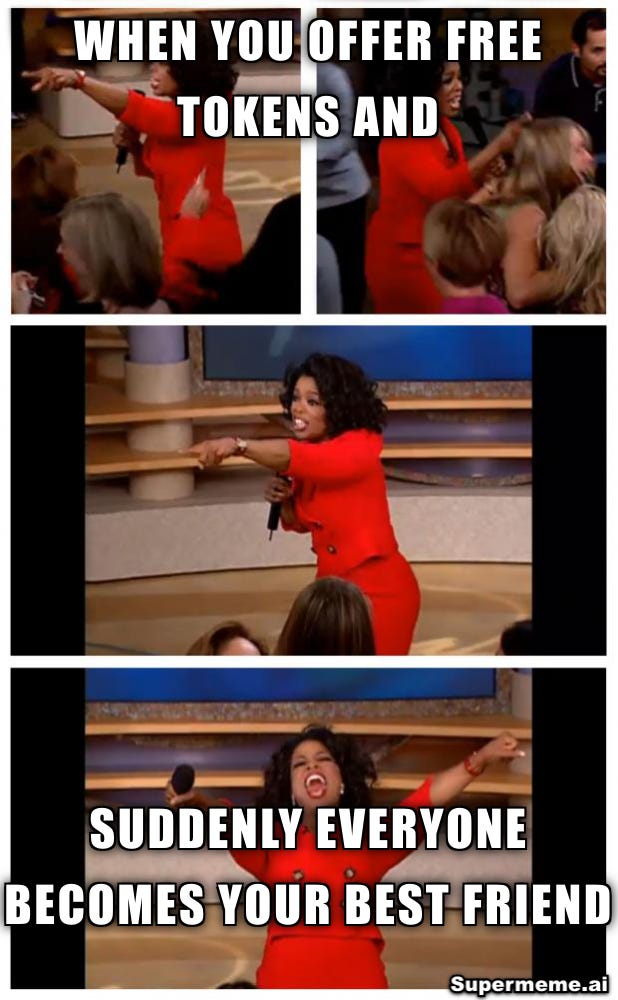
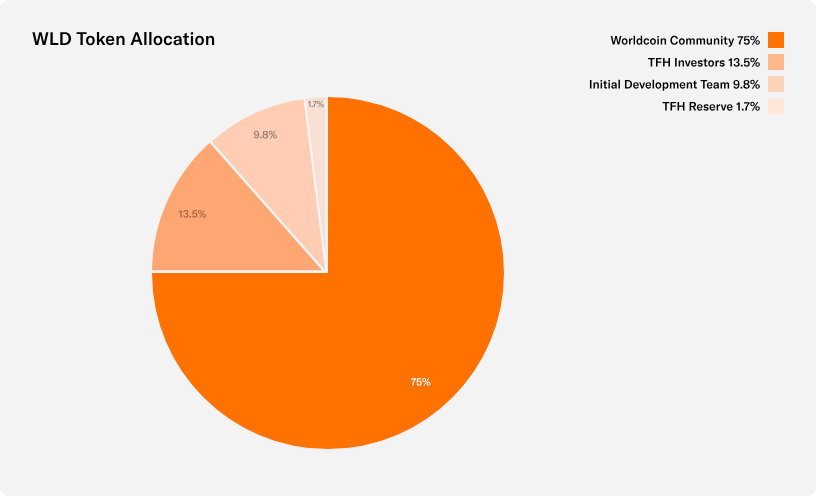
The concept of Proof of Personhood is interesting and needed, but tbh I don't like how it's being executed atm.
Signed up on World App but still haven't scanned my eyeballs and not yet sure if I'll be scanning mine in the future. I'm just claiming all those grants as they become available for now. How about you Taha? Are you touching the World App?
Insightful 👍